Ultimate Guide To Exploring The Museo Di Santa Chiara In 2026
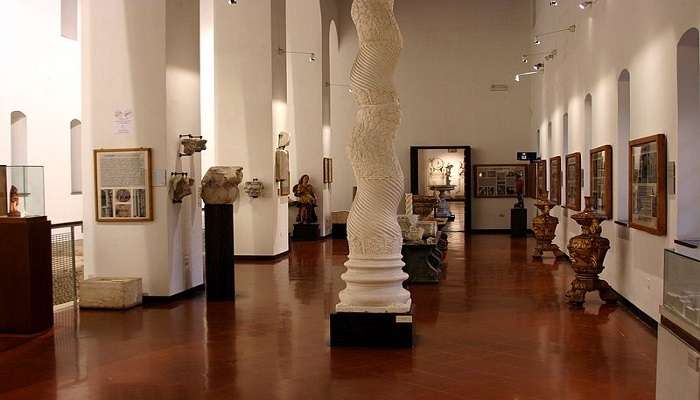
Museo di Santa Chiara in Italy almost perfectly captures the essence of history, art, and culture. Almocated in a little nook, this museum takes you through a journey of times that have passed and reveals various secrets and tales about this magical region. This blog gives a glimpse into the museum’s most captivating listings and explains why this place needs to make it to the bucket list for traveling!
Exploring the Museo di Santa Chiara
It is impossible to consider the Italian museums only as a collection of exhibits. Still, there are more, especially the Museo di Santa Chiara, in the heart of Assisi, to represent Italy’s outstanding cultural and religious legacy. Its settings are a converted convent connected to St. Clare and contain outstanding exhibitions of medieval paintings, sculptures, ceramics, wood carvings, and other religious items. Lovely courts, well-preserved rooms, and documented exhibits representing art and religious optimism as popular and radiant as today greet the visitor. The places and the atmosphere of the museum and the exploration of the works of art and devotional objects at Museo di Santa Chiara offered an inspiring journey through the artists’ and believers’ perceptions of Assisi and the region of Umbria.
1. The Fresco Gallery
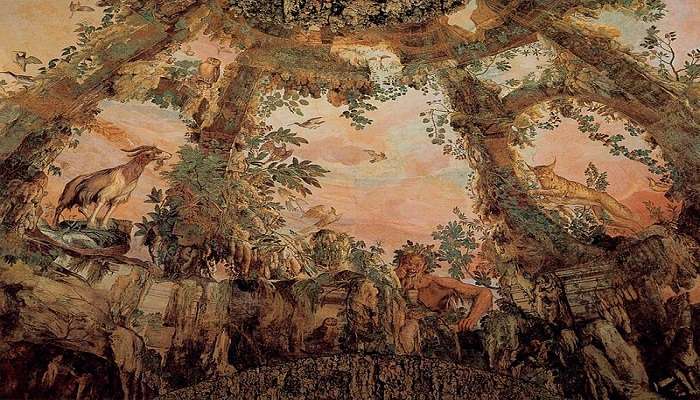
The Fresco Gallery of Museo di Santa Chiara is simply amazing, alive with medieval art. Stepping into this gallery, one travels back in time to the era when fresco painting was one of the leading art expressions. The walls are bright with centuries-old frescoes illustrating biblical scenes, mythological scenes, and even sharp pieces of everyday life in the Middle Ages.
Each fresco is a masterpiece; its colours are so fresh due to its good preservation. The minute detail, from the expression of the figures down to the evidence of delicate brushstrokes, testifies to the skill and imagination of the artists. You almost feel the emotion of the characters, sense the stories unfolding, and appreciate the artistic brilliance that defines an era. This gallery provides a different understanding of how frescoes were utilised to tell stories and values to the sizeable illiterate society.
Also Read: Cafes In Naples
2. The Archaeological Collection
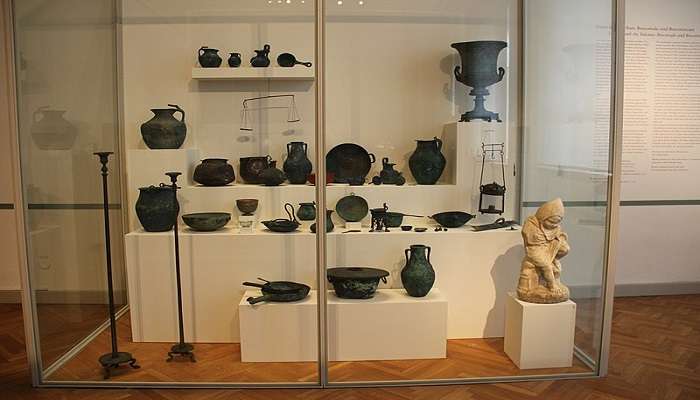
The archaeological collection of the Museo di Santa Chiara is impressive, with pieces from very ancient times. This part of the museum allows us to learn how people lived in this region many centuries ago. The collection includes all types of items, from Roman pottery and tools to beautiful jewellery and coins uncovered by excavations in this region.
This is where a visitor can trace the timeline of human development and observe how cultures evolved over the centuries. With every artefact, from a simple cooking pot that can tell about the diet and way of domestic life, the ancient Romans led to various sets of beautifully crafted jewellery, telling about fashion and craftsmanship of the time. The collection also comprises some rare items, like an ancient Roman amphora that had been used for transporting wine and thus helped visitors imagine the busy trade routes and links between different parts of the ancient world.
3. Sculpture Hall
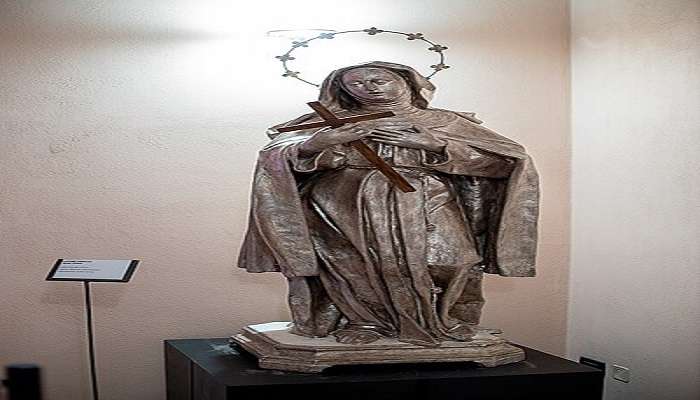
If you like sculptures, the Museo di Santa Chiara’s Sculpture Hall will enchant you. It is a treasure of three-dimensional art from several periods, including the Renaissance and Baroque. You will find beautiful statues of religious figures, classical divinities, and local personalities reflecting their time’s artistic trends and influences.
They range in size from the tiny, filigree pieces that must be carefully looked at to the colossal and imposing statues that dominate an entire room. Most have been carved out of marble and restored to their original state. The detail in these sculptures is breathtaking-from the folds in a flowing robe to the life-like expressions on the faces of the figures. The hall gives ample opportunity to appreciate the skill and dedication that went into creating these masterpieces.
Related Post: Naples Castles
4. The Sacred Art Collection
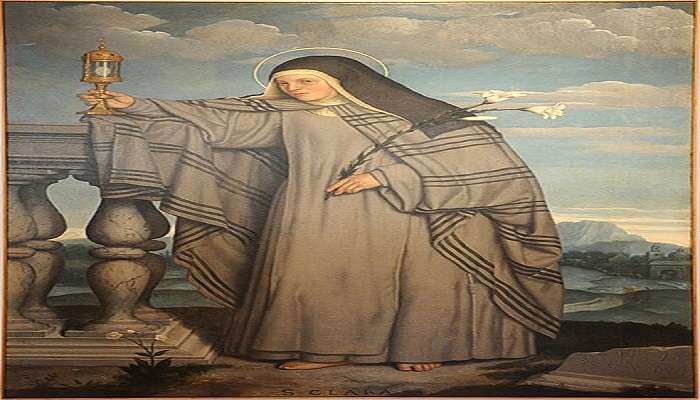
Other treasuries included in the Museo di Santa Chiara are the Collezione di Arti Sacre. The collection consists of several religious vestments, richly embroidered with much ornamentation, including gold chalices, elaborate crucifixes, and reliquaries. Each item in this treasury has its own story and forms part of many religious functions and customs that have shaped the region over centuries.
It consists of local and international pieces, with donations from churches and private collectors. Many of the artefacts are overlaid with precious metals and stones, which denotes how much reverence was held for these items. The Sacred Art Collection also houses an exciting development in Christian iconography, from its early days to the pieces from the Baroque period.
5. The Cloister Gardens:

When you have explored the indoors, take a leisurely walk outside the museum in the Cloister Gardens. This serene outdoor space is a good place to sit and reflect upon the beauty and history you have just witnessed. Surrounded by ancient stone walls and nicely manicured greenery, Cloister Gardens is a lovely retreat from the day-to-day hustle and bustle.
These gardens have several flora, flowers, and herbs mainly used in medieval medication and cooking. Statues and fountains along the pathways add to the beauty of the place. This is a perfect place for photo shoots, with a picturesque setting that provides an incredible backdrop for your photos.
Related Post: Naples Zoo
6. Temporary Exhibitions:
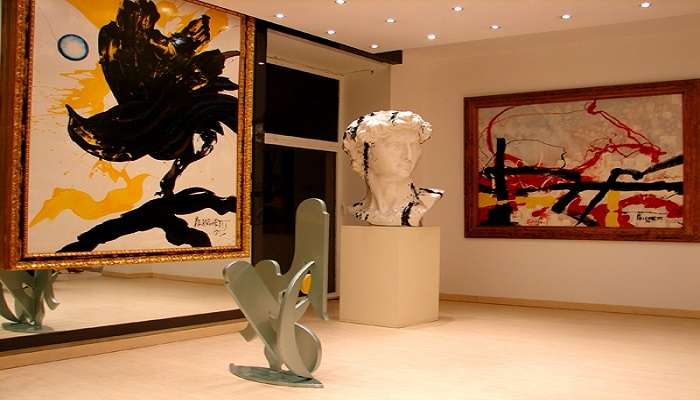
Unique for Museo di Santa Chiara is the fact that this museum keeps the experience fresh through its temporary exhibitions. These regularly change and are curated to exhibit various themes, artists, and periods, often placed alongside contemporary works and historical pieces. This dynamic approach ensures there’s something new to see and discover.
Over the years, it has presented various exhibitions ranging from modern photography and installation art to themed ones regarding local history, such as “Medieval Life in the Countryside” and “Renaissance Innovations.” Such exhibitions not only shed new light on how to consider the region’s history but also bring to the fore how the past continues to influence contemporary art and culture.
You May Also Like To Read: Restaurants In Naples
To conclude, Museo di Santa Chiara is an insight into Assisi’s art and spirituality, and it enables guests to create an idea about Assisi from a medieval and religious point of view. Once renovated, the museum is situated in a convent with solid associations with St. Clare. It contains beautiful art and items that spread knowledge of people’s artistic and spiritual lives in the past. However, there are even more things to see around the museum: the Basilica di San Francesco, Piazza del Comune, Rocca Maggiore, Eremo delle Carceri—all these sites add to the overall picture of the culture and history of Assisi. Gothic frescoes, the bustle of the town square, the historical district’s stone walls, or the forest’s silence are all artefacts of many different dates. Museo di Santa Chiara offers a perfect and exciting acquaintance with Assisi history, and resort attractions can be explored by booking a trip to Italy.
For our editorial codes of conduct and copyright disclaimer, please click here.
Cover Image Credit: José Luiz for Wikimedia Commons
Frequently Asked Questions About Museo di Santa Chiara
What makes Museo di Santa Chiara so magnificent?
The Museo di Santa Chiara boasts one of the largest exhibits of medieval works of art and other relics. Located in a former convent linked with St. Clare, the museum is a valuable guide to the artistic and religious traditions of Assisi and Umbria.
When is Museo di Santa Chiara open to the public?
The museum's working hours are from 9 AM to 6 PM. However, the hours may change, so the best source of information is the museum's website or, better yet, calling them.
Is there any charge for any Museo di Santa Chiara visitor?
However, regardless of what one has to part with to enter the Museo di Santa Chiara, it is customary to pay an entry fee. The fee is reasonable; however, the best way to find out how much it costs right now and whether there are discounts is to visit the museum's website or call.
How do I get to the Museo di Santa Chiara from the Railway Station?
To reach the Museo di Santa Chiara from the nearest railway station, i.e., The Assisi Railway Station, there is a walking path by which you would reach the Museum in about 15-20 minutes. You can also go via a bus or a cab.
Is it possible to visit Museo di Santa Chiara on an organized basis?
For the most part, Museo di Santa Chiara provides visitors with guided tours to help them better understand and appreciate the art pieces. Such tours explain specific details about the exhibits and the history of the convent. Individuals are advised to make a reservation ahead of time or go to the museum ticket desk to check for availability or a time slot.
People Also Read:
Tourist Places In Italy Things To Do In Italy Hidden Gems In Italy

With a passion for exploring and travelling to the roads long forgotten, experience the world through enthralling stories and adventures. Join me as I share my experiences at some of the world’s most popular tourist destinations and quench that pestering curiosity with something exciting!











